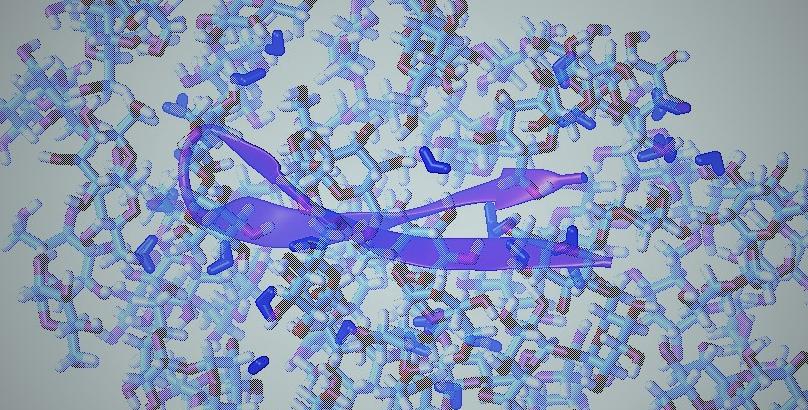Citation:
Abstract:
By complexing with hydrophobic compounds, cyclodextrins afford increased solubility and thermodynamic stability to hardly soluble compounds, thereby underlining their invaluable applications in pharmaceutical and other industries. However, common cyclodextrins such as β-cyclodextrin, suffer from limited solubility in water, which often leads to precipitation and formation of unfavorable aggregates, driving the search for better solvents. Here, we study the solvation of cyclodextrin in deep eutectic solvents (DESs), environmentally friendly media that possess unique properties. We focus on reline, the DES formed from choline chloride and urea, and resolve the mechanism through which its constituents elevate β-cyclodextrin solubility in hydrated solutions compared to pure water or dry reline. Combining experiments and simulations, we determine that the remarkable solubilization of β-cyclodextrin in hydrated reline is mostly due to the inclusion of urea inside β-cyclodextrin’s cavity and at its exterior surfaces. The role of choline chloride in further increasing solvation is twofold. First, it increases urea’s solubility beyond the saturation limit in water, ultimately leading to much higher β-cyclodextrin solubility in hydrated reline in comparison to aqueous urea solutions. Second, choline chloride increases urea’s accumulation in β-cyclodextrin’s vicinity. Specifically, we find that the accumulation of urea becomes stronger at high reline concentrations, as the solution transitions from reline-in-water to water-in-reline, where water alone cannot be regarded as the solvent. Simulations further suggest that in dry DES, the mechanism of β-cyclodextrin solvation changes so that reline acts as a quasi-single component solvent that lacks preference for the accumulation of urea or choline chloride around β-cyclodextrin.
By complexing with hydrophobic compounds, cyclodextrins afford increased solubility and thermodynamic stability to hardly soluble compounds, thereby underlining their invaluable applications in pharmaceutical and other industries. However, common cyclodextrins such as β-cyclodextrin, suffer from limited solubility in water, which often leads to precipitation and formation of unfavorable aggregates, driving the search for better solvents. Here, we study the solvation of cyclodextrin in deep eutectic solvents (DESs), environmentally friendly media that possess unique properties. We focus on reline, the DES formed from choline chloride and urea, and resolve the mechanism through which its constituents elevate β-cyclodextrin solubility in hydrated solutions compared to pure water or dry reline. Combining experiments and simulations, we determine that the remarkable solubilization of β-cyclodextrin in hydrated reline is mostly due to the inclusion of urea inside β-cyclodextrin’s cavity and at its exterior surfaces. The role of choline chloride in further increasing solvation is twofold. First, it increases urea’s solubility beyond the saturation limit in water, ultimately leading to much higher β-cyclodextrin solubility in hydrated reline in comparison to aqueous urea solutions. Second, choline chloride increases urea’s accumulation in β-cyclodextrin’s vicinity. Specifically, we find that the accumulation of urea becomes stronger at high reline concentrations, as the solution transitions from reline-in-water to water-in-reline, where water alone cannot be regarded as the solvent. Simulations further suggest that in dry DES, the mechanism of β-cyclodextrin solvation changes so that reline acts as a quasi-single component solvent that lacks preference for the accumulation of urea or choline chloride around β-cyclodextrin.
Notes:


